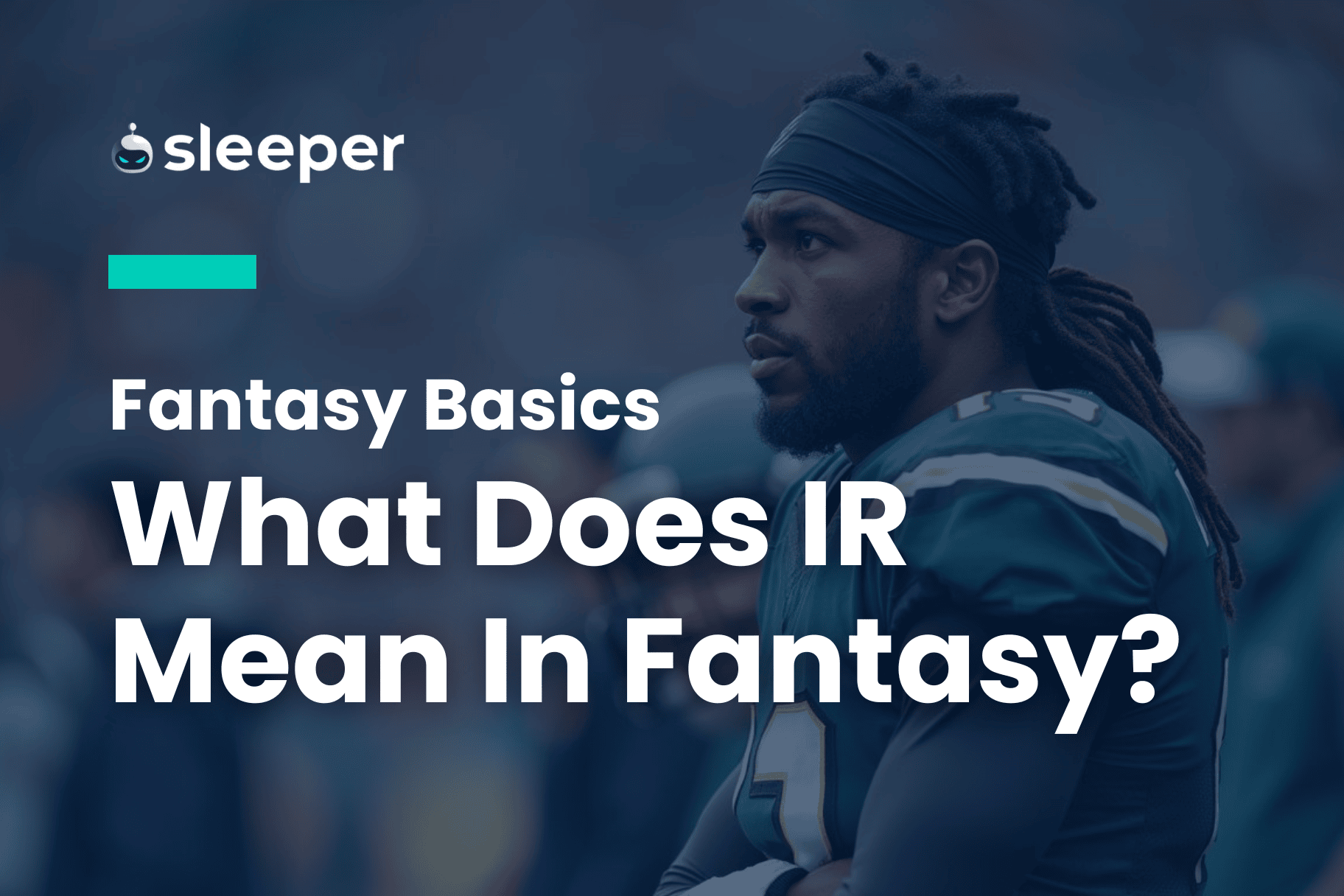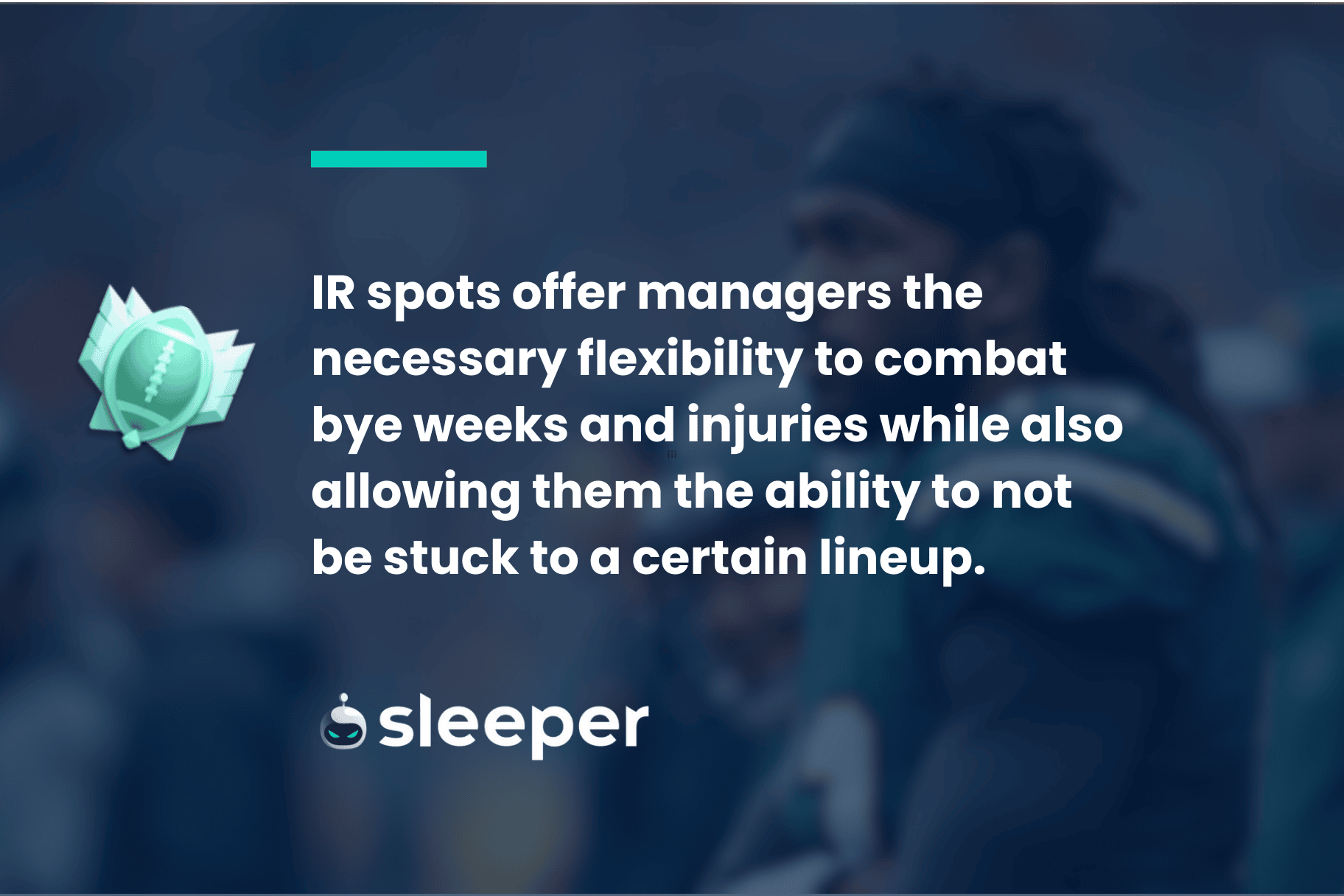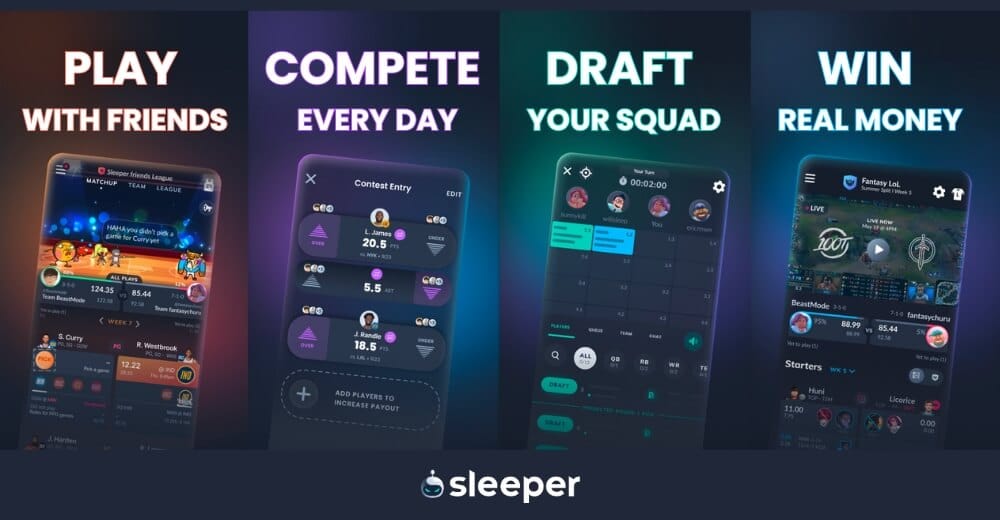Injuries are unfortunately a regular feature of the NFL, and when it comes to fantasy football, it’s important to understand the meaning and implications of these two important letters.

IR and Fantasy Football: How NFL Injuries Can Impact Your Squad and Lineups
Captain Obvious Alert: Players get hurt playing football. Sometimes those injuries are minor and require fantasy managers to pay attention to daily practice reports to determine whether a player is suiting up or sitting out.
Other times, those injuries are more debilitating and require players to go on IR — Injured Reserve — and miss multiple games. As with most things that happen in the NFL, there are fantasy implications, so read on to learn how IR, in fantasy and in real life, can affect your team.
What Does IR Mean in Fantasy Football?
The IR in fantasy football and the IR in NFL football are not always apples-to-apples.
In the NFL, a player goes on IR when it’s clear he’s going to miss multiple games. Putting him there frees up a roster place for that player’s team but it requires the player to miss at least four games. NFL teams can open a 21-day window for a player on IR to begin practicing. If that player is not activated by the end of that window, he must sit out the rest of the season.
In fantasy football, a player who is IR-eligible is either someone who is on real-life IR or otherwise someone who has been ruled out for a given week’s game. That ruling could come down days before a game, or it could happen the day of.
How Does the IR Work in Fantasy Football?
Once a player becomes IR-eligible, he can be moved from the active roster to an IR slot.
By having that player in that slot, it opens up space on the active roster, allowing the fantasy manager the freedom to pick up a potential replacement — or any additional player at any position — without having to drop anyone.
Once the player comes off IR, the roster must stay at its maximum size, so he must either be dropped or restored to the active roster at the expense of another player who is then promptly cut.
Should You Use IR Spots In Your Fantasy League?
IR spots offer managers the necessary flexibility to combat bye weeks and injuries while also allowing them the ability to not be stuck to a certain lineup.
Say your league only offers five or six bench spots. Maybe there’s a week where you have three players on bye, and now a player or two gets hurt. That would force you into either dropping someone you don’t want to drop just to have a complete starting lineup or fielding a subpar team that has little chance to win.
With even just one IR spot — some leagues have two or more — managers have more flexibility to move things around without fear of being severely handicapped. Having at least one spot for injured players is a manager-friendly setup that many leagues utilize.

Who Is Eligible to Go on IR?
Any player unable to play due to injury is eligible to go on IR. Rules regarding which statuses are included depends on the fantasy platform. In Sleeper leagues, a player is eligible for IR if they are labeled as Out, Suspended, PUP, NA, DNR, Doubtful, or if they are placed by their team on the actual NFL IR list (more on all this below in the FAQ).
How Long Can You Keep a Player on IR?
A player can stay on IR as long as he’s deemed injured and meets the qualifications for that status, according to whatever platform is running the show. On Sleeper, once a player who is on IR is no longer eligible to stay there, the team’s roster is unable to be changed until the squad is size-compliant.
How Many IR Spots Are There in Fantasy Football?
That’s a league-by-league decision. Generally there’s one place, with more generous commissioners offering some further leeway and extending that to two. Anything more than that is typically gratuitous.
During the COVID-19 pandemic, when players had to navigate frequent coronavirus testing and were more susceptible to missing games despite not being injured in the more usual sense, there was a case for opening up more IR spaces, but not during a more standard, post-pandemic regular season.
Sleeper leagues allow up to 10 IR slots, providing maximum customization possibility.
Frequently Asked Questions
Let’s dig a little deeper into all things IR:
How does IR work on Sleeper?
In addition to the typical reason for a player to be IR-eligible (he’s on real-life NFL IR), Sleeper offers a series of customizable options that are unique to the platform.
Commissioners can choose whether they want players who are suspended, players who are holding out, players who are off active rosters (NA), players who have COVID-19 and players whose injury distinctions are “out” or “doubtful” (it’s rare that a player who is doubtful winds up featuring) to be eligible for the IR spot. Commissioners can choose one, some, none or all of those options at their discretion.
What happens when a player goes on IR in fantasy?
When a player goes on IR, it opens up a roster place that can be filled. So if teams have a maximum of 15 roster spots, managers are effectively able to add a 16th player temporarily while one of their players is injured.
Can a player go on IR twice?
In fantasy football, a player can go on IR multiple times over the course of the season, given that IR is typically just another way of saying the player has been ruled out for a given week.
In real-life football, a player can be designated to return from IR a maximum of two times per season.
What happens when you have a player in your IR slot who is no longer IR-eligible?
Since activating that player would put your roster over its maximum capacity, you’ll either have to drop the player who is coming off IR or drop a different player from your squad in order to become compliant.
IR spots are great for flexibility, but they are in a way a ticking time bomb for a future decision that you might not want to make.
Why would I keep a player on IR who has been ruled out for the season?
It is absolutely your prerogative to not do this, of course. But if you are in a keeper league, and a player you’ll want on your team the following season happens to suffer a season-ending injury, you can at least protect that investment by stashing him on IR. If you only have one IR spot allotted to you, that will severely limit your current-season flexibility, but you’ll at least know that your keeper choice is secure.
Play Fantasy Football With Sleeper
Now that you know how to handle and maneuver through player injuries in fantasy football, sign up for a season-long league with Sleeper and put that knowledge to the test. You can do so by signing up on the website or downloading the app.
Sleeper’s fast-growing platform is extremely user friendly, ad-free and free to use and offers a slew of unique and customizable options to make your fantasy league precisely how you want it to look.
If daily fantasy sports is more your speed, you can play the paid-entry DFS Sleeper Picks games, where you can win cash prizes by picking whether you think certain players will exceed or fall short of their stat projections for a given game.




